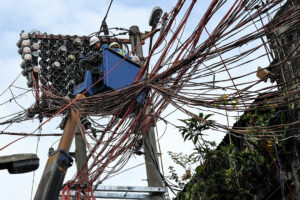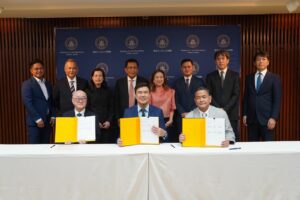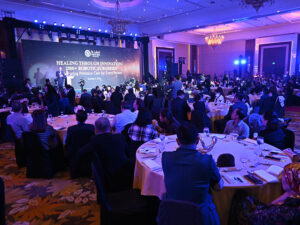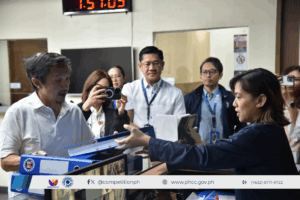THE PHILIPPINES will need a budget of up to P70 billion to achieve full electrification by 2028, but next year’s budget would cover only a small portion of the requirement.
“As proposed in the NEP (National Expenditure Program), (the national electrification budget) is probably only around P5 billion (in 2026), and actually, we need about P69 billion or P70 billion,” Energy Secretary Sharon S. Garin told reporters last week.
Ms. Garin said the government is on track to achieve full electrification in the next three years as there are different ways and sources of funding that can be implemented.
In coordination with the National Electrification Administration (NEA), the state-run agency tasked with promoting and supporting rural electrification, the Energy chief said the government will be focusing on energizing far-flung areas in Mindanao.
For 2026, the NEA has been allocated a P5-billion budget to finance its site electrification program.
During a recent hearing at the House of Representatives, Ms. Garin said the Department of Energy (DoE), along with relevant agencies, is earning substantial amounts for the National Treasury.
For next year, the DoE is seeking a P3.84-billion budget, 24% higher than its P3.08-billion budget for this year.
Compared to its budget, the DoE is earning more than P10 billion, mainly coming from the collection of shares from national wealth in the production of petroleum, coal, geothermal, wind, solar, and hydropower energy resources.
“There will be other streams of income and hopefully, we can access that too, especially for electrification purposes,” Ms. Garin said. “We are okay with the budget [for 2026].”
The 2024-2033 National Total Electrification Roadmap outlines the Philippines’ strategy to achieve 100% household electrification by 2028, or the end of the current administration’s term.
As of June 2024, 27.32 million households have access to electricity, but approximately 291,303 households have limited electricity service.
The government is pursuing programs such as household electrification, distribution line extension, stand-alone home systems, and microgrid systems to achieve the target.
INDIGENOUS NATURAL GASThe government is also looking to promote the development of the Philippines’ natural gas industry to attain greater energy security.
In a department circular dated Sept. 1, the DoE has established rules to prioritize indigenous natural gas as a power supply source.
“There is a need to establish a clear framework to ensure the prioritization of indigenous natural gas through competitive, market driven pricing, while continuing to attract imported natural gas as a viable business investment in the Philippines,” the DoE said.
Among the guidelines included is the creation of a review and evaluation committee that will assess the pricing scheme adopted by suppliers utilizing indigenous natural gas.
The Indigenous Gas Prioritization – Review and Evaluation Committee (IGP-REC) will be chaired by an Energy undersecretary supervising the Energy Resource Development Bureau (ERDB) and Oil Industry Management Bureau (OIMB). Other committee members include the director of the ERDB, OIMB, and Legal Services.
IGP-REC is tasked to review and evaluate the pricing methodology adopted by suppliers and implement all other necessary measures allowed under the circular.
Under the circular, the DoE also ordered for gas-fired power plants to prioritize utilizing indigenous natural gas over imported natural gas.
“All users of natural gas shall first utilize available quantities of indigenous natural gas,” the agency said.
Malampaya gas field, which supplies about 20% of Luzon’s power needs, is the country’s sole natural gas provider. — S.J. Talavera






